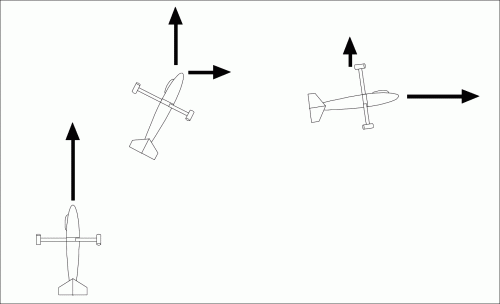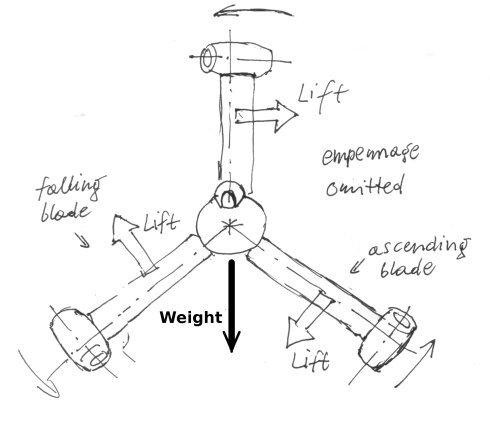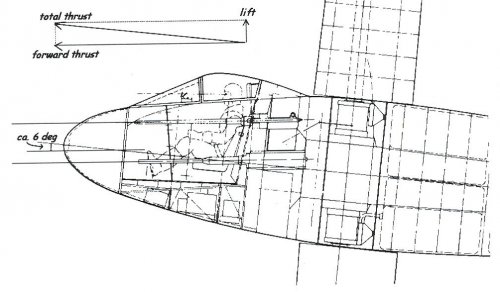Hi!
I have always wanted to know, how lift was supposed to be generated for level flight of Focke-Wulf Triebflugel. If they are shown in artworks in level flight, the take off and landing rotor blades generate both, thrust and lift (the latter as wings in the less perverse desings). But lift cannot be generated this way, while the falling blade would generate a positive lift indeed, the ascending one would generate the negative lift. Were the blades intended to be stopped at this mode, and set at high angle of attack?
The whole concept of this machine looks absurd to me anyway.
I have always wanted to know, how lift was supposed to be generated for level flight of Focke-Wulf Triebflugel. If they are shown in artworks in level flight, the take off and landing rotor blades generate both, thrust and lift (the latter as wings in the less perverse desings). But lift cannot be generated this way, while the falling blade would generate a positive lift indeed, the ascending one would generate the negative lift. Were the blades intended to be stopped at this mode, and set at high angle of attack?
The whole concept of this machine looks absurd to me anyway.




